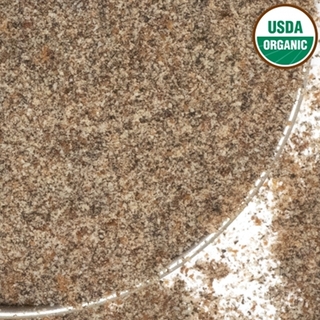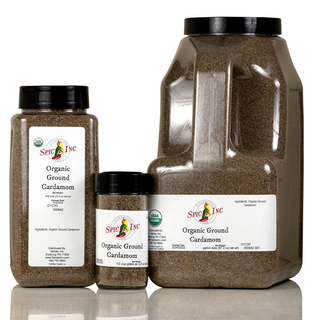Organic Ground Cardamom




Organic Ground Cardamom
Organic Ground Cardamom, Elettaria cardamomum, is the brownish-white powder that comes from grinding cardamom seeds. It is also known as organic ground cardamon, ground cardamon, ground cardamom organic or organic cardamom ground.
Ground Cardamom comes from firm, unripened cardamom fruit, or pods, that contain about a dozen seeds each. It is a member of the Zinziberaceae, or ginger, family, and is closely related to galangal, ginger, grains of paradise, and turmeric.
Organic Ground Cardamom is regularly purchased by:
- health and wellness-adjacent food manufacturers;
- coffee or tea manufacturers;
- brewpubs and distilleries;
- coffee shop restaurants;
- bakeries; and
- cafes
We also carry Organic Cardamom Seeds and conventional cardamom products like Ground Cardamom and Cardamom Seeds.
Flavor Profile
Organic Ground Cardamom’s complex flavor is slightly floral, sweet and spicy with citrusy notes.
How To Use
Organic Ground Cardamom plays a starring role in Southeast Asian curries, desserts and pilafs. Add it to Vindaloo Curry Spiced Bean and Tomato Soup or Butter Chicken for extra aroma and indefinable flavor. Stir into chicken for a savory Chicken Tagine, or add to a marinade for lamb chops with garlic and pepper, and grill. Or try its softer side; make a sweet and easy breakfast Chai Spiced Overnight Oats. Braise pears in cardamom syrup, or swap into the Easiest Pancakes Ever. Add some to snickerdoodles, French toast, or rice pudding for a new take on some old classics.
Cardamom works well in combination with yogurt, fruit, chicken, grilled lamb, meatballs, pastries, sausage, oats, beans, apples, and almonds.
Pair Organic Ground Cardamom with black pepper, saffron, butter, parsley, cilantro, clove, cinnamon, coriander, cumin, ginger, paprika, and citrus flavors like lemon and orange.
| Also Called | Ground cardamom organic or organic cardamom ground |
| Species | Elettaria cardamomum |
| Ingredients | Ground cardamom seeds |
| Flavor Profile | Camphoraceous, minty, peppery, floral |
| Oil content | 2-10% |
| Recommended Uses | Blends, rubs, desserts, vegetables, chicken, lamb, meatballs, fruit |
| Cuisine | Indian, Asian, Middle Eastern |
| How To Store | Airtight container in a cool, dark place |
| Shelf Life | 6-12 months |
| Country of Origin | Guatemala |
Nutrition Facts
Serving Size1 tsp
Amount Per Serving
Calories7
% Daily Value*
Total Fat0g0%
Saturated Fat0g0%
Trans Fat0g
Polyunsaturated Fat0g
Monounsaturated Fat0g
Cholesterol0mg0%
Sodium0.4mg0%
Total Carbohydrate1.5g1%
Dietary Fiber0.6g2%
Total Sugars0.0g
Added Sugars0g0%
Sugar Alcohol0.0g
Protein0.2g0%
Vitamin D0mcg0%
Calcium9mg1%
Iron0mg2%
Potassium25mg1%
*The % Daily Value (DV) tells you how much a nutrient in a serving of food contributes to a daily diet. 2,000 calories a day is used for general nutrition advice. These values were calculated and therefore are approximate. For more accuracy, testing is advised.
